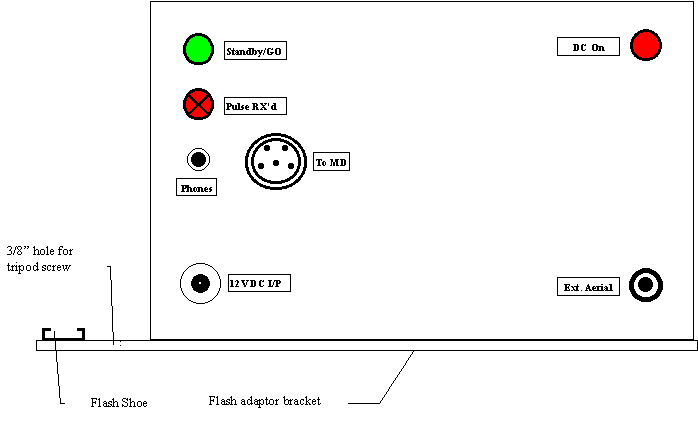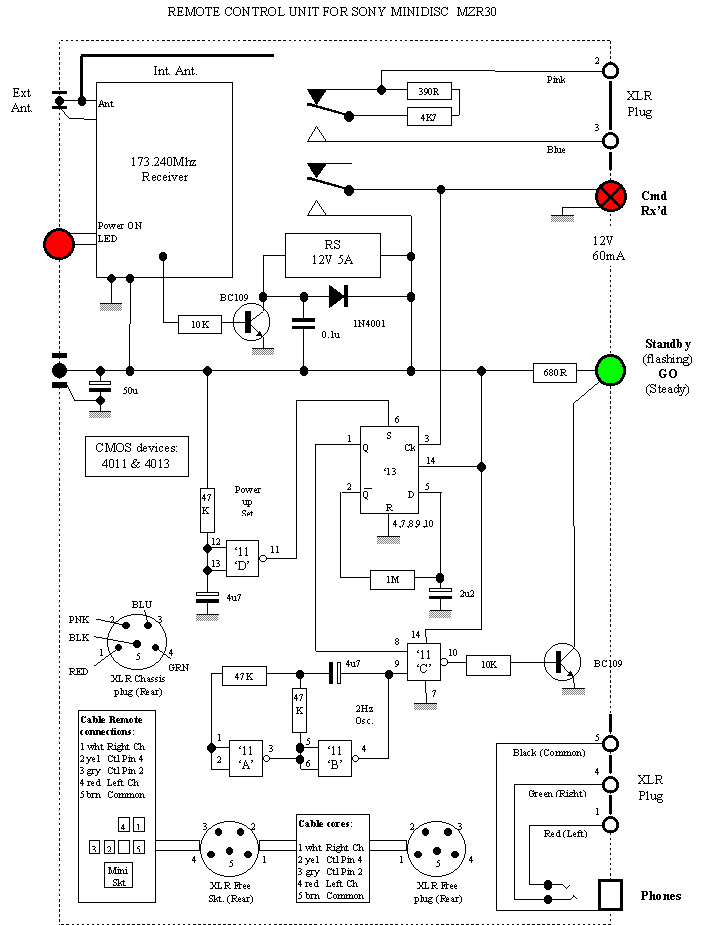Radio Remote Control Unit
for Sony MZ-R30 Portable
Brian Houghton ([email protected])
Introduction
With my choral activities I had a need to be able to switch the MZ-R30
from 'standby' to 'record' from a remote position within the choir. I
looked at various methods, radio, infra-red, etc. The decision was
made by the free availability of a redundant "Homecall" unit from a
friend. This is normally used to summon aid when the operator presses
a button on the pendant transmitter and the receiver, having
established a coded identity, calls a central office. This unit has a
range of 50ft, but can be extended to 100ft with a small whip aerial.
The MZ-R30 comes with a cable operated remote. In order to simulate
the operation of the standby button I would need to break into the
cable and place a resistance of 5156 ohms across the relevant
pins. Incidentally, a new remote costs around GBP 58 and you can't buy the
special plug for the MZ-R30.
Description
The active pulse from the "Homecall" receiver drives a BC109
transistor to call a 12V DPDT relay. One set of contacts places the
"Standby" control resistance across the appropriate pins on the remote
connector via a modified remote cable. The other contacts operate a
high brightness red filament indicator to signify to the user that the
unit has operated. This contact is also used to clock a 4013 "D" type
bistable which is used to control a green LED, either to flash at 2Hz
to indicate "standby" similar to the MZ-R30 red record LED indicator,
or as a steady state to indicate recording. Extra components are used
to ensure that the bistable powers up in a "Standby" condition and to
ensure positive changeover in the presence of the noisy pulse from the
relay. The headphone output is repeated on the unit in case it is
required to monitor whilst setting up. The 12 Volt power is provided
by an external jelly battery.
Construction
The "Homecall" receiver and other components are fitted into a plastic
project box which is placed on a photographic tripod by means of a
"flash adapter". Alternative Transmitter/Receiver units could be
sourced from Maplin
UK. Typical units work on 173 or 418 Mhz and are low power units,
normally used for garage doors, remote door bells, etc., that do not
need a licence.
The existing remote cable is disconnected from the control pod and
reconnected to a male mini XLR 5 pin connector. (These connectors are
expensive, but are worth every penny. Don't be tempted to use mini-DIN
connectors). This end will then mate with a female chassis XLR socket
on the unit. A new cable is then made up using 5 thin wires in a 1/8"
heatshrink sleeve. This will shrink down to the same size as the
original cable to enable the control pod to be connected at one end
and a female mini XLR 5 pin connector at the other. This enables the
cable remote to be used in its original mode.
Diagrams


Note:
Perhaps one should write on the box "THIS IS NOT A BOMB!"
It occurred to me that a member of the public who wasn't aware of the
function of the unit could misunderstand with embarassing consequences.

